SHOT TO REMEMBER
BY JONATHAN DAYTON AND VALERIE FARIS
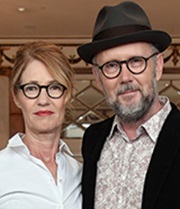 One of the challenges on Little Miss Sunshine, both creatively and logistically, was that a good portion of the story took place with six people inside a VW van. We considered a variety of approaches, finally deciding to take the most authentic route and simply shoot everything practically, traveling down open highways at 50 mph. (The project was finished with traditional color timing so digital solutions weren't an option.)
One of the challenges on Little Miss Sunshine, both creatively and logistically, was that a good portion of the story took place with six people inside a VW van. We considered a variety of approaches, finally deciding to take the most authentic route and simply shoot everything practically, traveling down open highways at 50 mph. (The project was finished with traditional color timing so digital solutions weren't an option.)
Production designer Kalina Ivanov and her team collected a fleet of five late '70s VW Buses from Craigslist. Each was customized with the exact same details, from the perfectly matched bug splats and bird droppings on the windshields to weathered stickers on the back bumper.
As an ensemble film, it was essential to be able to shoot from any angle, allowing us to experience the action from the point of view of each character inside the bus. It was also important to keep the camera a certain distance from the actors so we could avoid the distortion of wide angle lenses.
Many times we went freewheeling with handheld cameras in the back and Greg Kinnear in the driver's seat, holding our fate in his hands (under the guidance of our 1st AD, Thomas Smith). Two highway patrolmen (one in front, one behind) escorted the entourage.
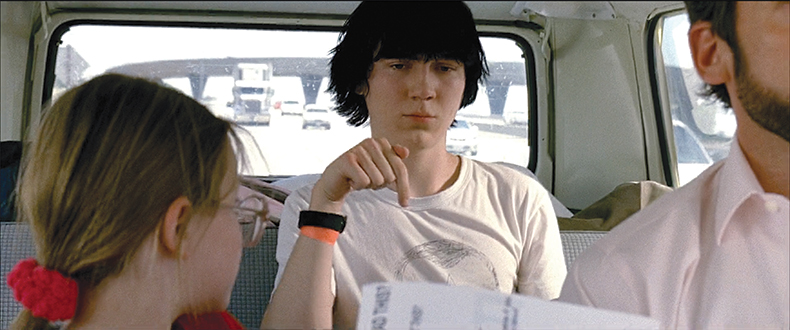
In the opening moments of the film, we learn that Olive's brother Dwayne (Paul Dano) has taken a vow of silence until he turns 18 and is training to be a fighter pilot in the Air Force. His life revolves around this goal, counting down the days until he can escape this world and his family.
After a series of harrowing events, the loss of their grandfather (whose body is now in the back of the van) and an encounter with a very suspicious highway patrolman, the family is shaken but able to keep on their ultimate mission, to get Olive to the Little Miss Sunshine Pageant.
While in the hospital waiting room, Olive picks up a brochure about color blindness. Back on the road, she decides to give Dwayne a test.
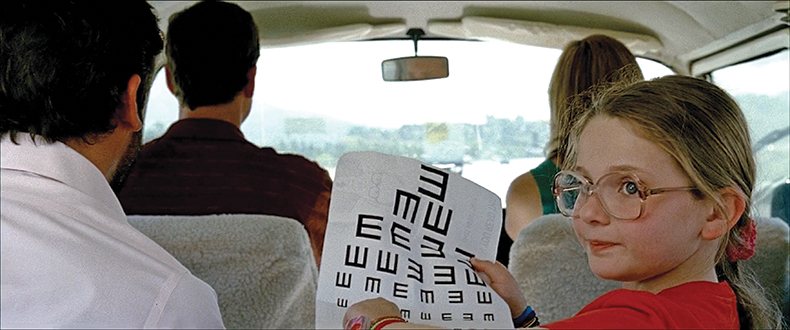
We like how an image like this can elicit strong feelings from different times in our lives. For Olive, this view evokes a sense of peace and security as they move down the road, the parents riding shotgun. For Dwayne it's a very different feeling, he's trapped in the back of the bus (quite literally).
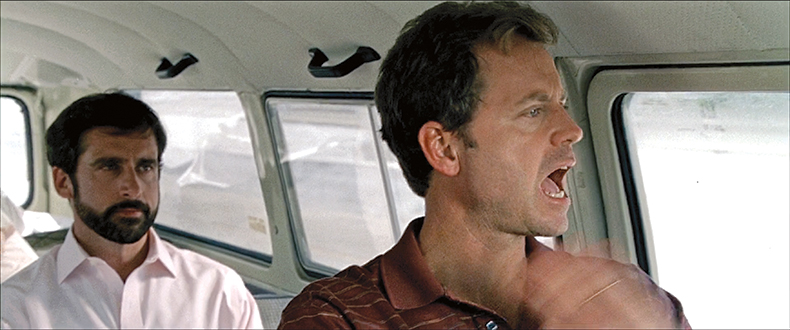
In this traveling three-ring circus, we are constantly reminded of escalating problems with the VW van as it continues to honk uncontrollably. Here in a moment of improv, Greg Kinnear mimes an exchange with another driver who honks back at the van. (As you might expect, every single horn honk was added in post. We created an entire language of different sounds from short percussive beeps to longer plaintive moans.) The yellow bus becomes a character in the story, embodying the dysfunction of the group.
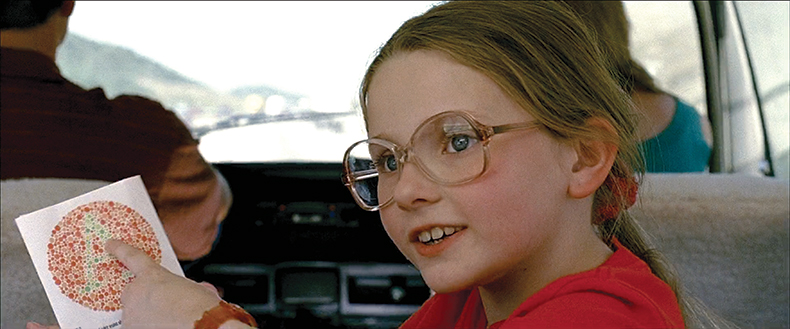
Olive continues with the test for color blindness. The family remains unaware of the impending crisis. We had two cameras running most of the time, so everyone was always on camera. Our entire cast, from nine-year-old Abigail Breslin to 71-year-old Alan Arkin, never missed a beat and could do five-minute takes one after the other.
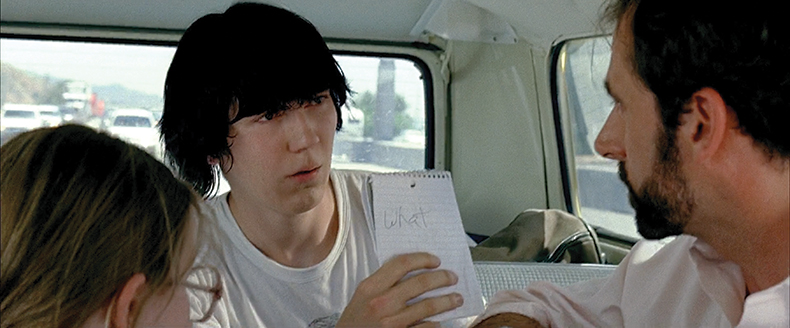
As parents of three children, we were quite familiar with the backseat meltdown in the family van. Here, screenwriter Michael Arndt created the ultimate example. In conversations with Paul, we likened the moment to a bird caught inside a room, or a wild animal cornered in a cage.
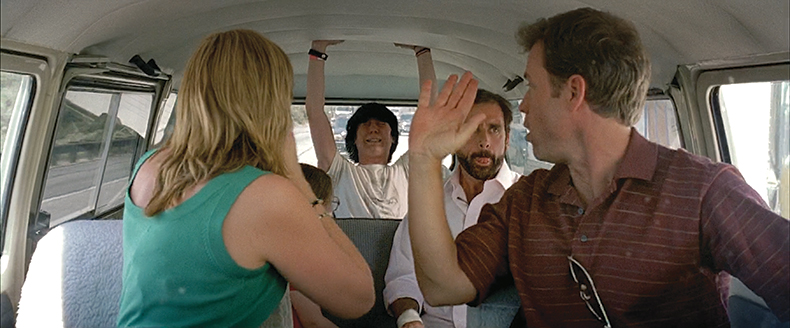
As Dwayne discovers he's color blind (and unable to become a fighter pilot), he starts to implode. Without speaking a word (he's still sworn to his vow of silence), he begins kicking the side panel with both legs, shaking the entire van. In a series of quick cuts, we watch every member of the family trying to cope with the escalating crisis.
Before going into the editing room, we make paper printouts of all our favorite performances (using a special printer designed for ultrasound examinations). This allows us to have a visual record of even the most fleeting moments. This process is particularly valuable in a scene like this where finding the right gesture or glance between characters can really make a scene.
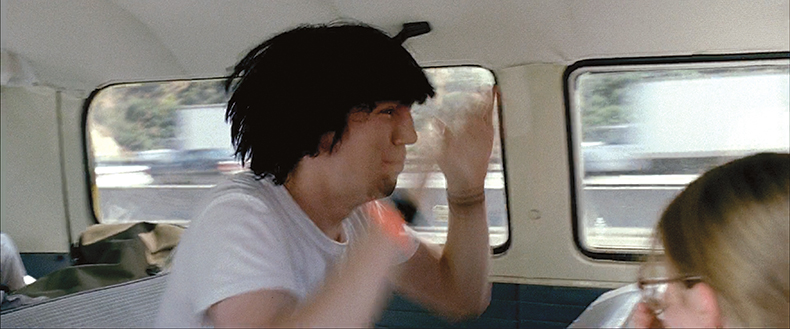
We encouraged Paul to use every part of the van to express his frustration…kick the side panel, shake the seat, pound the ceiling.
It was an interesting staging challenge—trying to find ways to add movement when the entire cast were all tied to their chairs with seatbelts. We began each take with the scripted lines and let it escalate into improvisation as the actors twisted back and forth in their seats, talking over one another. Sound design made the violence of Dwayne's thrashing more visceral. Throughout the chaos, the van's malfunctioning horn continued its unrelenting honks.
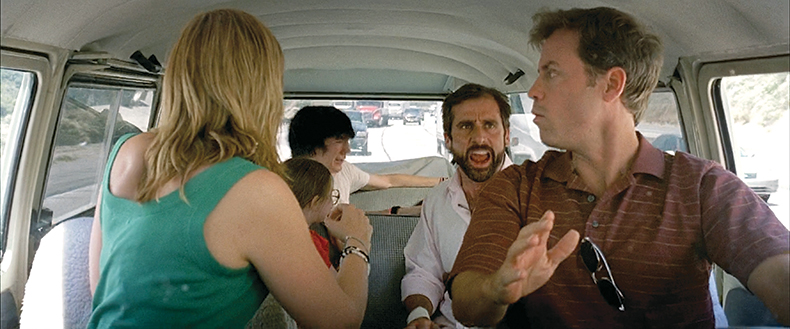
The 2.35:1 widescreen format allowed us to see multiple characters interacting within the frame. It also enhanced the sense of peril with the world speeding by outside the windows. For a time we considered shooting with anamorphic lenses, but decided they would be impractical given their size and weight in the bouncing bus. Our DP found a great series of vintage Cooke lenses that gave us the look we wanted (by shooting full frame and cropping the image in post).
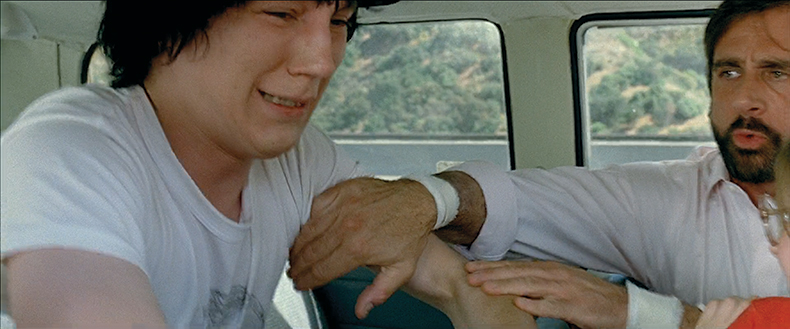
In a final act of desperation, we told Paul to attempt to get out of the van, even as it continues down the highway.We created two buses with re-movable panels and giant Plexiglas screens so that the actors wouldn't be blown around by the wind. The entire rig rattled like mad, but we found that at certain speeds everything settled to an acceptable level. It's a tribute to our cast that they were able to deliver such moving (and focused) performances while the van shook and live traffic moved around us.
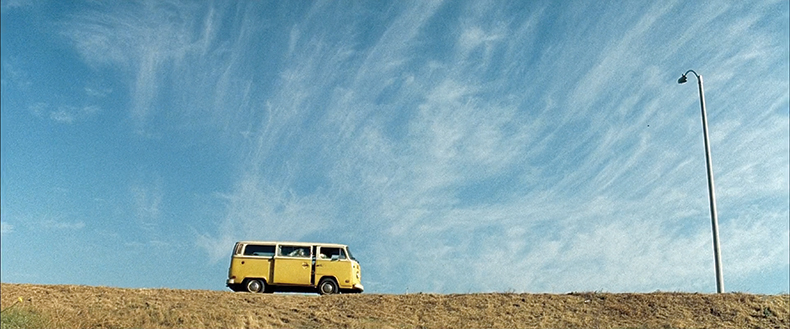
Our goal was to recreate the saturated colors of old family photographs shot on Kodacrome and Ektachrome. With DP Tim Suhrstedt, we tested a variety of film stocks and paint samples, looking for the ideal shade of yellow that would make the van stand out on the horizon.
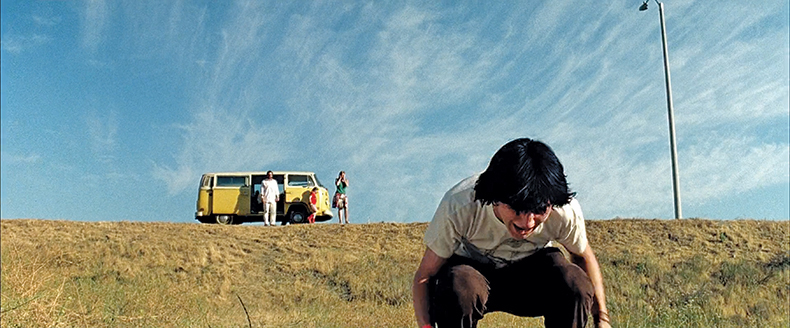
Finally, the family makes their way to the side of the road. From the moment we first read the script, we imagined the bus silhouetted against the sky and Dwayne escaping down a hill. We wanted to convey a sense of helplessness as the family remained small on the horizon, far from their son.
In preproduction we always make a long mural of images that help define the world of the film. One of the key images for this scene was the painting by Andrew Wyeth, "Christina's World."
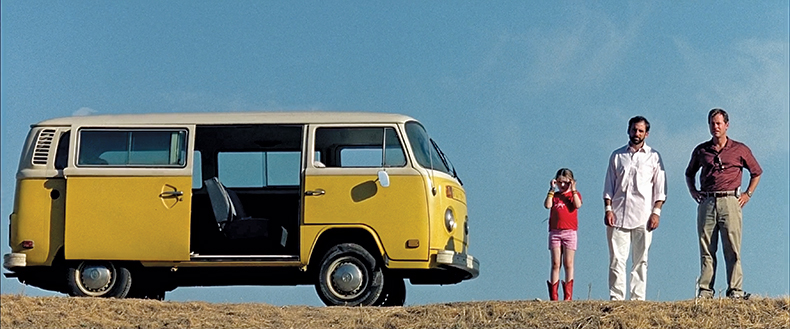
The film was shot in 30 days (for the most part in story order). Our schedule allowed for one day to shoot both the interior car scene and the aftermath at the side of the road. We had originally planned an elaborate sequence of Dwayne bursting out of the bus, but by the time we were ready to shoot the scene, we had only an hour left with Abigail (who at nine years old, was only allowed eight hours of set time per day).
We quickly cut our shooting plan to only the essential elements and raced to cover the action before we lost our actress. In the end, we had time for two takes of this most crucial moment.
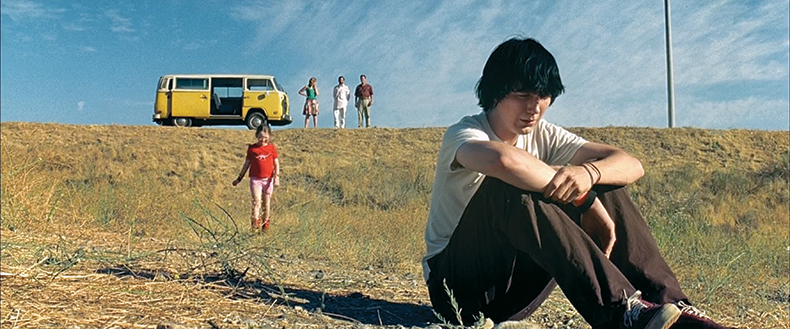
Having worked together for weeks, the cast and crew moved like a SWAT team to set up the next shot. We had little time to discuss any details, we simply told her to comfort her brother. We shot the rehearsal. Olive tentatively made her way down the hill to Dwayne.
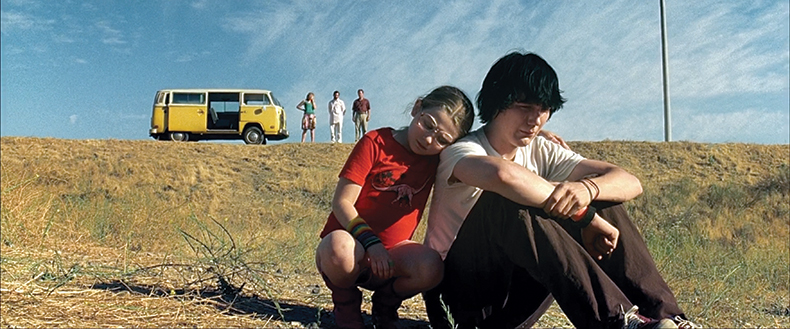
We didn't know what she was going to do. Without uttering a word, she knelt beside him for the longest time, and then gently put her head on his
shoulder. At that moment, we knew we had the scene.